Woodlouse classification explains how these crustaceans are scientifically categorized. This article discusses their taxonomy, species diversity, and ecological roles. Learn how woodlice fit into the animal kingdom.
Key Takeaways
-
Woodlice belong to the class Malacostraca and the order Isopoda, with significant adaptations for terrestrial life, including the ability to roll into a ball as a defense mechanism.
-
They are ecologically important detritivores, consuming decaying organic matter and contributing to nutrient cycling and soil health in various habitats like gardens and forests.
-
Woodlice have a unique reproductive strategy, where females carry fertilized eggs in a specialized pouch, ensuring the survival and development of offspring in suitable environments.
Taxonomy and Scientific Classification
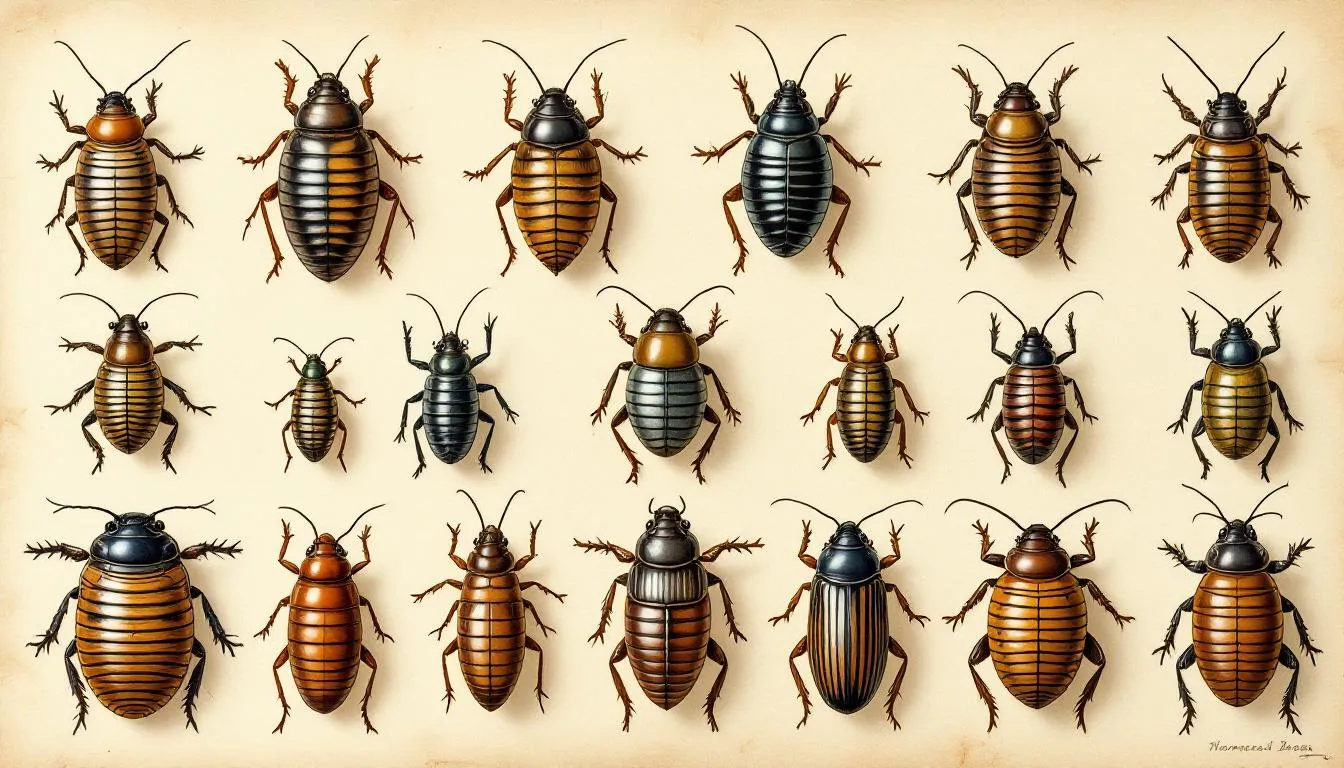
Understanding woodlice begins with their scientific classification:
-
Class: Malacostraca, a large and diverse class within the animal kingdom that also includes crabs, lobsters, and shrimp.
-
Order: Isopoda, known for their flattened bodies and jointed limbs.
-
Suborder: Oniscidea, which includes several species adapted to terrestrial life.
Woodlice belong to the infraorder Holoverticata, which encompasses various sections. A well-known family within this group is Armadillidiidae, which includes the commonly recognized pill bugs or Armadillidium vulgare. This family, part of the genus armadillidium, is distinguished by their ability to roll into a ball as a defensive mechanism, similar to a wood bug and pill millipedes pillbugs.
These classifications highlight the evolutionary nuances and biological diversity of few lineages of woodlice.
Species Diversity
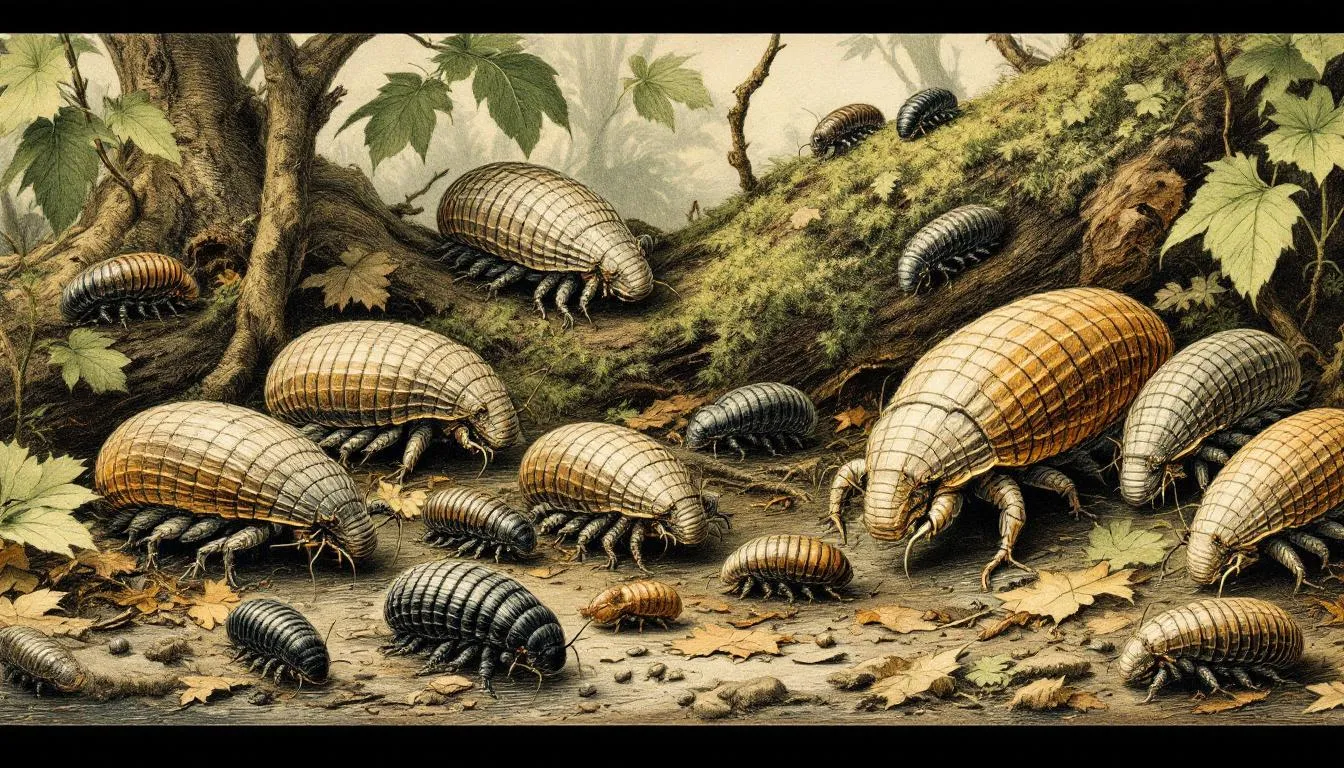
Woodlice are globally diverse, with around 4,000 recognized species of woodlice. As of 2014, approximately 3,710 species had been identified, reflecting extensive research in this field. Notable species include Oniscus asellus, commonly referred to as the shiny woodlouse, and the common pill bug, Armadillidium vulgare, both of which are familiar to many due to their widespread presence. Additionally, woodlice Oniscus asellus kingdom highlights the ecological significance of these creatures.
In the British Isles, there are five particularly common species:
-
The common shiny woodlouse
-
The common rough woodlouse
-
The common striped woodlouse
-
The common pygmy woodlouse
-
The common pill bug (also known as the slater bug)
They thrive in similar habitats such as gardens, under leaf litter, and within decaying wood. The existence of naturalised species in various regions showcases how woodlice have adapted to diverse environments, sharing similar habitats with other terrestrial crustaceans.
Woodlice also inhabit aquatic environments. Some species have adapted to aquatic life, living in marine intertidal zones or even returning to aquatic environments from their terrestrial habitats. This adaptability demonstrates their evolutionary success and ecological versatility, particularly among aquatic isopods.
Morphological Characteristics
Woodlice exhibit a distinctive morphology that makes them easily recognizable:
-
Their bodies are flattened and segmented, consisting of 11 distinct segments.
-
Each segment is equipped with a pair of jointed legs, totaling fourteen jointed limbs.
-
These legs aid in their movement and agility.
-
This segmentation and limb structure are hallmark features of woodlice, similar yet distinct from most arthropods and other terrestrial segmented arthropods.
When threatened, species in the families armadillidae can roll into a ball, a behavior known as conglobation. This defense mechanism protects their softer underparts from predators, much like the armadillo bug, and is an example of a species roll.
Woodlice come in a variety of colors, including gray, brown, yellow, and even pink, typically measuring around 10 mm long and 5 mm wide. These woodlice vary in their colors, highlighting their adaptability and evolutionary diversity.
Evolutionary Background
The evolutionary history of woodlice is a tale of adaptation and survival. They are generally regarded as having originated from marine isopods, transitioning to land during the Carboniferous period. This significant evolutionary leap allowed them to exploit new habitats and resources, leading to the diversification we see today among terrestrial isopods. Their evolutionary journey likely predates the breakup of the supercontinent Pangaea, indicating their ancient origins.
Fossil records indicate woodlice have existed since the mid-Cretaceous period, around 100 million years ago. Early woodlice developed specialized appendages for respiration, enabling their survival on land.
Today, some species, like Ligia oceanica, have even returned to aquatic environments, showcasing their incredible adaptability. Their evolutionary background offers a fascinating glimpse into their resilience and versatility. Their ability to adapt to both terrestrial and aquatic environments, coupled with their long evolutionary history, makes them an intriguing subject of study for scientists and nature enthusiasts alike.
Habitat Preferences
Woodlice are typically found in damp, dark places, which provide the moisture they need to survive. Common habitats include:
-
Gardens
-
Under leaves
-
Rocks
-
Downed trees
-
In soil
These environments offer the humidity and cover that woodlice require, allowing them to thrive in very similar habitats across the globe, which may appear superficially similar to one another.
In gardens, woodlice are often found in:
-
mulch
-
leaf litter
-
decaying plant matter These areas provide both shelter and food. Crawl spaces with high humidity levels are also common habitats for woodlice, as these damp environments support their ecological roles.
Understanding their habitat preferences helps appreciate the ecological role of woodlice and their importance in ecosystems.
Diet and Feeding Habits
Woodlice are primarily detritivores, feeding mostly on dead plant matter. This diet includes:
-
decaying leaves
-
fungi
-
mold
-
animal droppings Consuming organic materials, woodlice play a crucial role in nutrient cycling, releasing vital nutrients back into the soil.
Their feeding habits are facilitated by their preference for moist environments, which support the decomposition processes they rely on. Thriving in similar habitats, woodlice contribute significantly to the breakdown of organic matter, maintaining soil health.
Reproduction and Life Cycle
Woodlice reproduction is a fascinating aspect of their biology. Key points include:
-
Female woodlouse carry fertilized eggs in a specialized pouch called the marsupium until they hatch.
-
A female pill bug can carry up to 200 fertilized eggs in this marsupium.
-
The marsupium is formed by overlapping plates attached to the bases of the first five pairs of legs.
-
This reproductive strategy ensures that the embryos receive essential resources like water and oxygen from the mother.
When the eggs hatch, the offspring, known as mancae, appear as small, white, curled forms lacking the final pair of legs. These mancae undergo a series of molts to mature into adults:
-
After their first molt, they develop an additional segment and increase their body complexity.
-
With each subsequent molt, they add complexity to their body structure.
-
Eventually, they reach the adult form.
The entire reproductive process, from fertilization to maturation, is a single process that ensures the survival and continuity of the species. Understanding this bug’s life provides insight into their resilience and adaptability in various environments.
Common Names and Regional Variations
Woodlice are known by a variety of names across different regions, reflecting local cultures and linguistic diversity, including woodlouse’s common names:
-
In Australia, they are often called ‘butcher boy’
-
In Newfoundland, Canada, they are known as ‘boat-builder’
-
In North America, common names include ‘sow bug’ and ‘rolly-poly,’ highlighting their playful and endearing nature.
In the UK, regional variations include names like ‘cheeselog’ and ‘cheesy bugs,’ terms that reflect local vernacular and cultural references. Other examples include the term ‘chucky pig,’ which is commonly used in parts of England, showcasing the rich linguistic tapestry surrounding these creatures.
Collectively, simply woodlice can be referred to as a ‘quabble,’ a unique collective noun that adds to their charm.
Woodlice in the Ecosystem
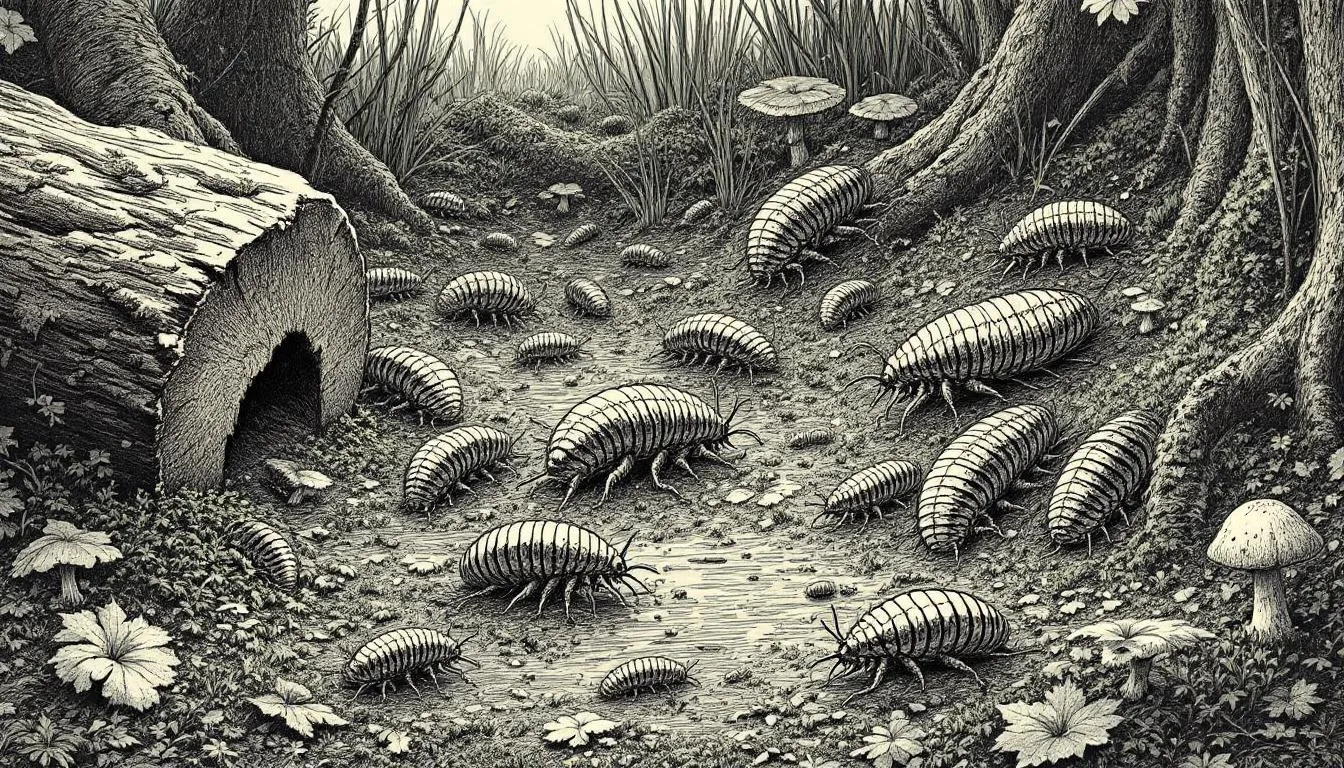
Woodlice play a crucial role in the ecology woodlice as natural recyclers. They:
-
Break down decaying organic materials, returning vital nutrients to the soil and contributing to its health.
-
Decompose leaf litter and other organic matter in gardens, enhancing soil fertility and structure.
-
Consume a diverse range of organic items, including dead insects and animal remains, further underscoring their ecological importance.
Woodlice also help remove harmful heavy metals from the soil, contributing to a cleaner and healthier environment. They serve as prey for various predators, including:
-
frogs
-
shrews
-
centipedes
-
spiders Thus, they play a vital role in the food web. Baby woodlice are particularly vulnerable to predators due to their less sturdy shells, making them an essential part of the diet for many small animals.
Through their roles in decomposition and as prey, woodlice significantly impact ecosystem health and stability. Their presence in very similar habitats across the world highlights their adaptability and ecological significance.
Aquatic Adaptations
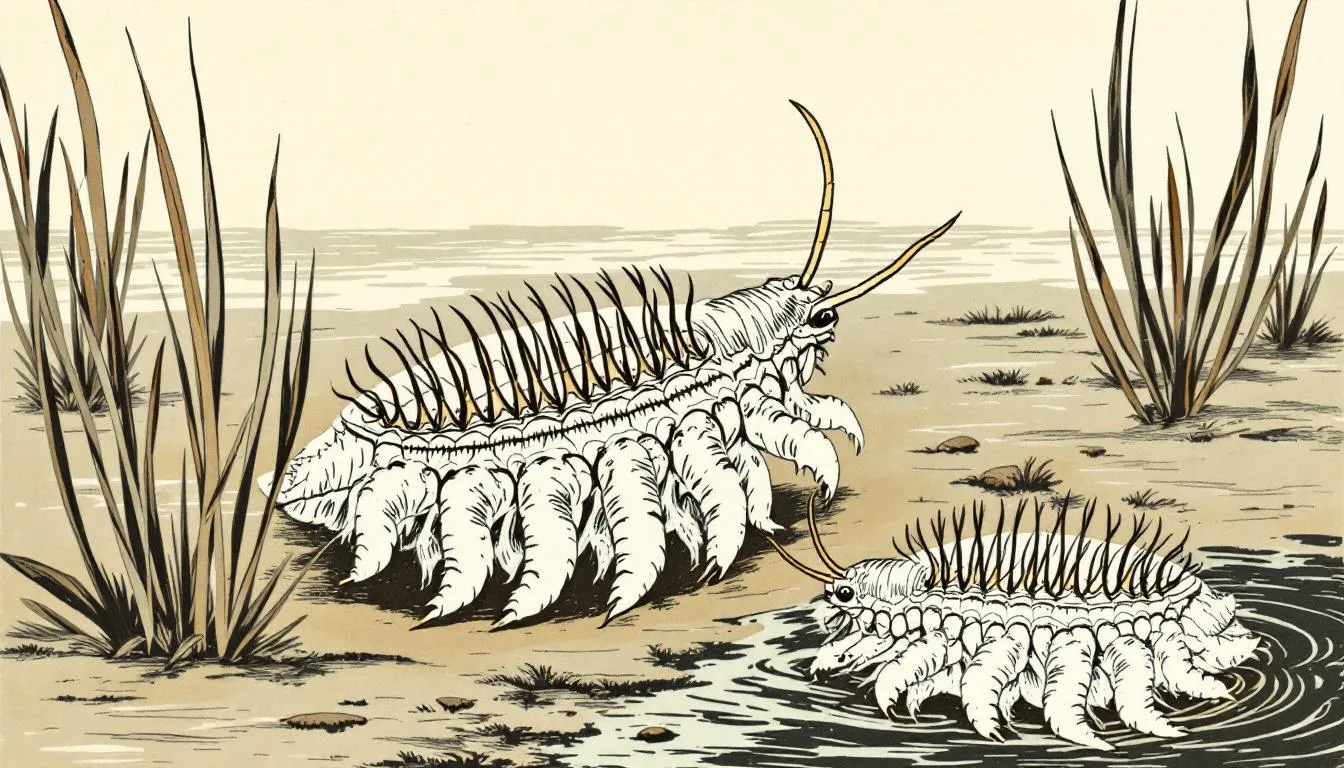
While most woodlice are terrestrial, some have adapted to aquatic environments. These adaptations allow them to survive in marine intertidal zones, showcasing a significant divergence from their land-dwelling relatives. Aquatic woodlice, such as those in the family Scyphacidae, possess specialized respiratory structures that enable them to extract oxygen from water. This adaptation is crucial for their survival in aquatic life.
For example, the marine intertidal sea slater, Ligia oceanica, has adapted to a semi-aquatic lifestyle, thriving in environments that are both terrestrial and aquatic. These species demonstrate the incredible adaptability of woodlice, capable of thriving in a range of habitats from land to sea.
Preventing Woodlice Infestations
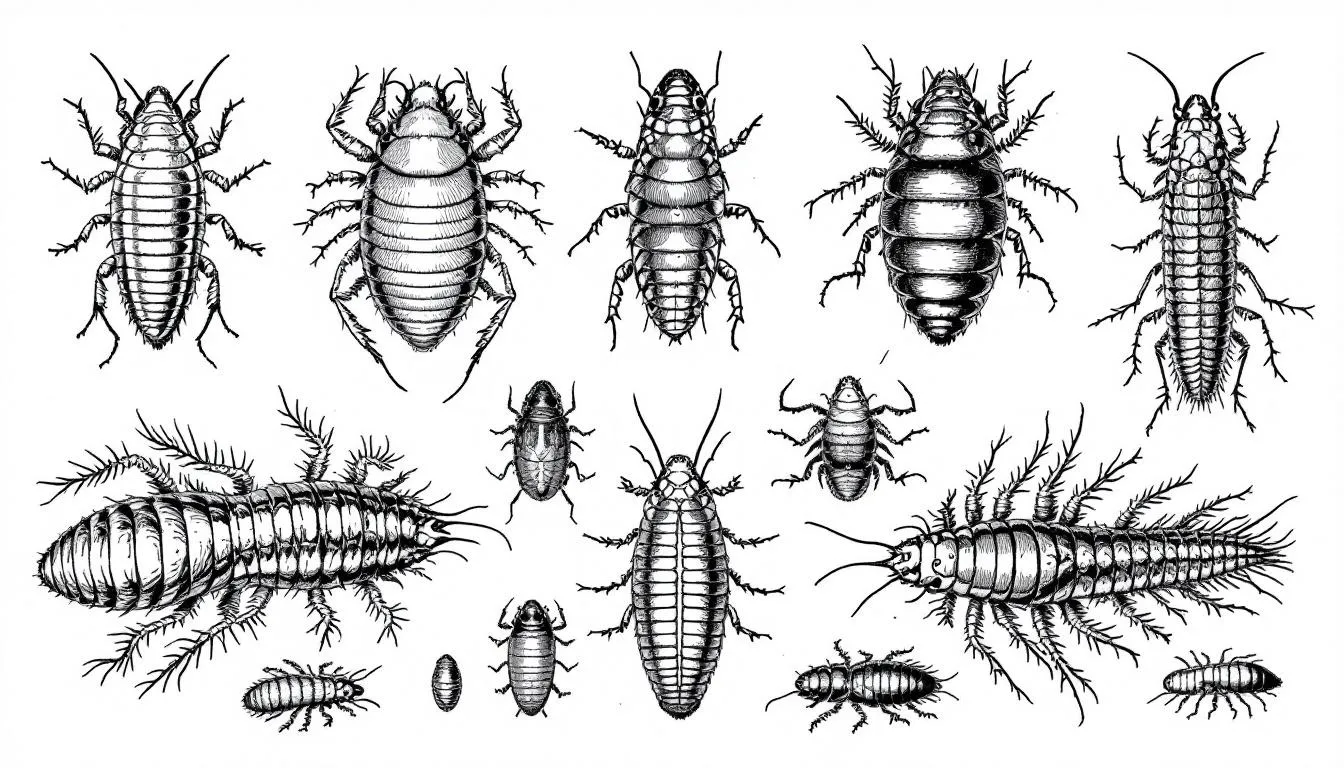
Preventing woodlice infestations begins with addressing any dampness problems in the home, as woodlice thrive in moist environments. Maintaining a dry, warm indoor environment is less favorable for woodlice, helping to keep them outside. Regularly cleaning gutters and ensuring that water does not accumulate near the foundation of the house can also help prevent woodlice from entering the home.
Blocking common entry points, such as cracks in walls, gaps around doors and windows, and other potential entryways, can significantly reduce the likelihood of woodlice infestations. Combining these dampness control measures with entry prevention methods creates a comprehensive approach to keeping woodlice at bay.
Understanding their habitat and behavior helps homeowners effectively manage and prevent woodlice infestations.
Summary
In summary, woodlice are fascinating creatures with a rich evolutionary history and significant ecological roles. From their diverse species and morphological characteristics to their habitat preferences and feeding habits, woodlice contribute to the health and stability of ecosystems. Their reproductive strategies and common names reflect the cultural and biological diversity that surrounds these terrestrial crustaceans.
Understanding woodlice’s importance in nutrient cycling, soil health, and the broader food web highlights their value beyond being mere household pests. By appreciating their adaptability and resilience, we can better coexist with these essential creatures and maintain the ecological balance they help sustain.
Frequently Asked Questions
What is the scientific classification of woodlice?
Woodlice are scientifically classified under the class Malacostraca, order Isopoda, and suborder Oniscidea, and they belong to the infraorder Holoverticata, including families such as Armadillidiidae. This classification highlights their unique position within the crustacean group.
How many species of woodlice are there?
There are approximately 4,000 recognized species of woodlice worldwide, with around 3,710 identified as of 2014.
What environments do woodlice prefer?
Woodlice prefer damp, dark environments that provide moisture and cover, such as gardens, soil, under rocks, leaves, and downed trees. These conditions are essential for their survival and activity.
How do woodlice contribute to the ecosystem?
Woodlice play a crucial role in the ecosystem by recycling decaying organic materials, returning nutrients to the soil, and aiding in the removal of harmful heavy metals. Additionally, they serve as an important food source for various predators.
How can I prevent woodlice infestations in my home?
To effectively prevent woodlice infestations, it is essential to eliminate dampness in your home, maintain a dry environment, regularly clean gutters, and seal any cracks and gaps around doors and windows. By taking these steps, you can significantly reduce the likelihood of an infestation.









